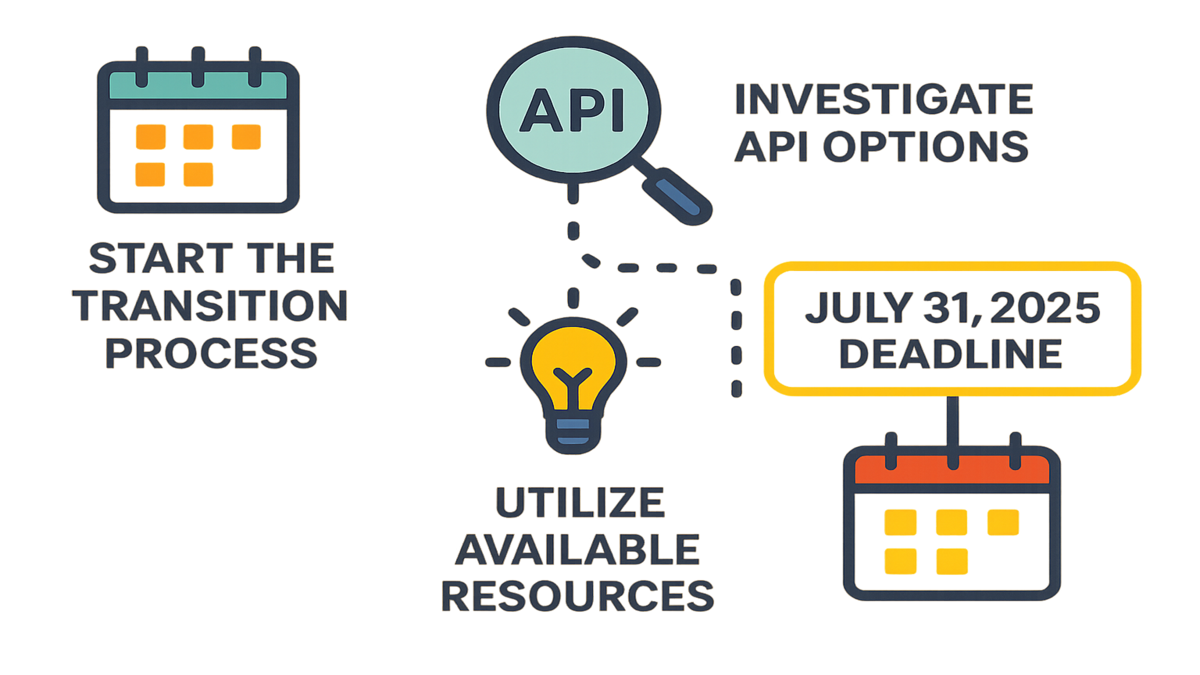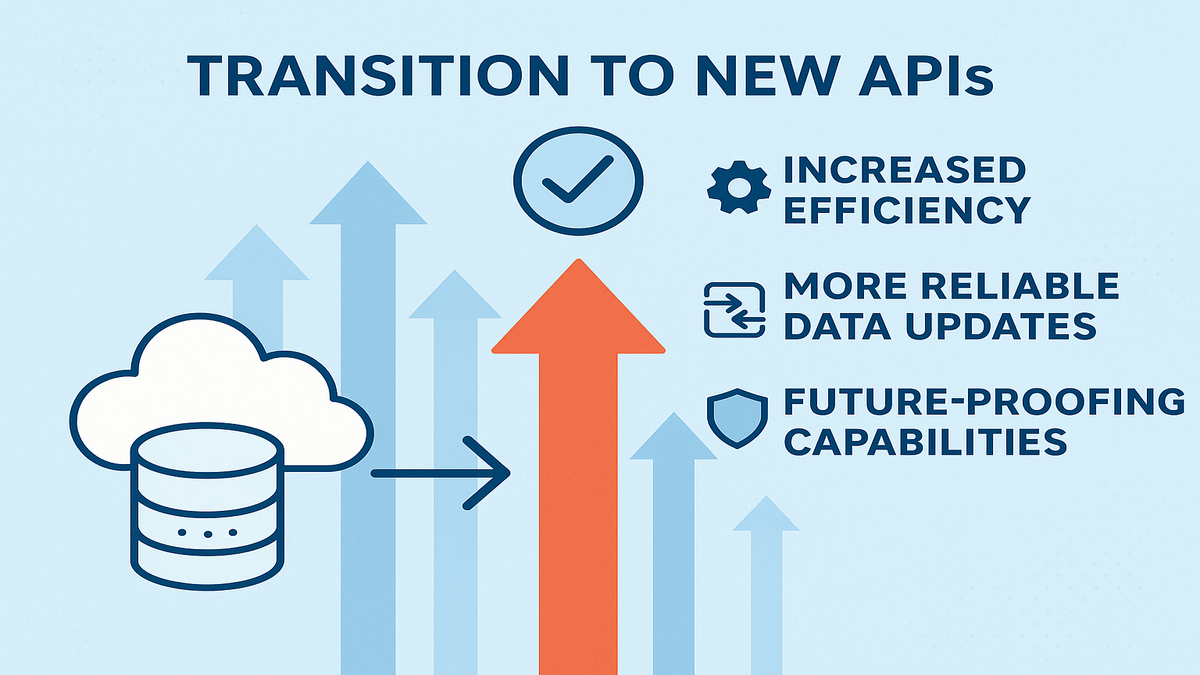
Master Feeds API Transition Before July 31, 2025

The time is running out for merchants working with Amazon’s Feeds API support for XML and flat file Listings feeds. By 31 July 2025, these dependencies will not work. Failing to meet this deadline may cause service interruptions and affect your business. Picture a universe in which you wake up one morning to find your listings are gone or your prices are out of date — chaos for any business operator. Luckily, there's a way out.
Amazon is pushing towards a transition to the Listings Items API or the JSON Listings Feed. This is not just about going to work; it’s about the future and the modern, smarter way of going to work. It may seem scary to transition, but they have the accommodation and guides you need. Let’s jump in and learn how you can overcome this transition with ease.
Key Takeaways
- July 31, 2025: This is the date when XML and flat file feeds will be completely deprecated.
- New API Options: Move to the Listings Items API or the JSON Listings Feed to keep your systems running.
- Helpful Resources: Amazon offers guides, webinars, and sample solutions to help with your move.
- Begin Early: If you start early, you won't have to rush to get everything moved at the last minute.
- Support by Amazon: Use materials from Amazon Developer Support to help with making the change.

Feeds API Transition
At the core of this transition are Amazon’s efforts to find more efficient, scalable means of serving customers. The older formats of the Feeds API worked well at the time, but current technologies have better and faster possible interactions.
That’s like trading up from one smartphone to another. Further, just because your decade-old device is still functional does not make it the most suitable tool to use for current purposes. Same would apply here. While XML and flat files were good in their time, modern APIs and JSON representations are good for the user experience and optimal usage of system resources.
Amazon’s decision is rooted in the transformation of e-commerce. As digital marketplaces become more sophisticated, efficient and scalable technology is crucial. JSON formats and API connections facilitate quick updates and real-time data sharing—so businesses can adjust fast to market changes, without skipping a beat. It’s like upgrading from dial-up to broadband — suddenly everything is speedier and smoother.
Relevance for Your Business
You don’t want your company to get bound up in technical problems. If you scrape end-of-life feeds, essential data (e.g., stock levels, product pricing, and image updates) is in danger.
"Marcus Roth, a leading digital transformation expert puts it: Switching to sophisticated APIs is not simply about compliance, it’s about future-proofing your business."
If 70% of businesses are recognizing that APIs are core to their strategy then this is an investment in your company's future. By introducing new APIs so fluidly, you should not only keep on rolling, but possibly gain access to new efficiencies.
If you need some inspiration, take a look at the Case Studies at companies who have successfully adjusted to transitions like this one. They may also assist in helping you devise a successful migration strategy.
Arming your business with state-of-the-art technological tools doesn’t merely protect against present challenges; it unlocks the doors to new possibilities. You may be able to plug-and-play with new platforms. You might even be able to automate your workflows and insights with data analytics, which you can bet are important for not falling behind in the competitive game.
Tools to Facilitate Change
Here’s an architecture for a gentler move:
Migrate Early
Begin the process to migrate well ahead of the mid-2025 deadline. This permits you to deal with unforeseen factors and to adjust as necessary without being rushed.
- Review Existing Set-Ups: Compile a full list of all existing dependencies on XML or flat file feeds.
- Discover New Categories: Explore Amazon‘s Listings Items API and JSON Listings Feed.
Starting early also allows you to iterate on your implementation, changing it based on testing and feedback. Even in the case of the big tech companies, changes are more gradual — with the companies troubleshooting in real-time. This proactive strategy can save you from scrambling at the last minute.
Utilize Available Resources
Amazon has a wealth of information to help make this transition. From how-to guides to video tutorials, it’s a very accessible world.
- Watch the Webinars: The best place to start is the Listings XSD to JSON Migration webinar.
- Follow the Guides: Use the Building Listings Management Workflows guide to accomplish this task in comprehensive steps.
We’ve included these resources to help you navigate the complexities of transition with a little less headache. They also provide the expert advice and step-by-step guidance to help you make sure that new systems don't stand in the way of new growth.
Test and Validate
Always test the integrations in full before you go live. Make use of Amazon's staging environments when you can, everything should be in place before flipping the switch.
- Verify Data Precision: Verify if product data, images, and pricing are valid and accurate.
- Check Integrations: Ensure that your systems can connect to and talk directly with Amazon.
Testing the waters regularly heads off potential pain points before they’re full-blown problems. In this stage, try to mimic real-life situations as much as possible to be sure that your systems can handle live data without any issues.
Fast-Track Migration Tips
A few top points to help you along:
- Early birds dodge service hiccups.
- Trust in Amazon Developer Support - rely on what you have.
- Future-proof your business by adhering to the latest technology requirements.

Common Questions
What happens if I’m late?
Fail to get that done and your XML and flat file feeds will cease to function, which could cause listing errors or interruptions.
May I still use the XML formats after the cutover?
No, the support for XML feeds simply won't be available. Migrate to Listings Items API or JSON Listings Feed to continue working.
What support does Amazon offer for making the transition?
Amazon provides guides, webinars, and sample solutions to help you make the transition. See the Amazon Developer Support page for more information.
How do I get started in the migration process?
Begin by taking a look at your existing feed dependencies. You can begin playing around with the new API options, make use of the resources we are releasing and let us know your feedback.
How much does it cost to change APIs?
Resource access is free but there might be internal development costs involved in upgrading or creating new systems that use the new APIs.
To discover services that assist in the transition, take a look at our Features where you will find information on groundbreaking technology.
Key Actions for a Smooth Transition
- Take stock: Establish the existing haul of XML or flat file feeds from your system.
- Access Resources: Jump into and join Amazon’s guides and webinars.
- Test Pre-Release: Test your new settings well, so that there’s no disruption once they go live.
- Stay Current: Keep watch for any updates from Amazon on resources and new support channels.
The shift to these new APIs is more than just compliance — you’re also positioning your business for future success. Get ready, adjust, and thrive in the API-based business world. By becoming part of Amazon's commitment to modern technology, you get the benefit of service continuity, and can look to develop new ways to enhance your business.
Keep ahead of the game by following Building Listings Management Workflows and our other guides to get the best out of these changes.

